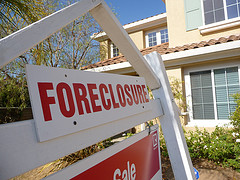There has been lots of press on the topic of Loan Modification. You can negotiate with your bank to modify your loan yourself or by using a third party expert negotiator or law firm. The government has also now gotten involved and set up a special program to help consumers modify their loans but not everyone qualifies for the government’s bailout as part of the government loan modification program. To see if you quality you need to do some basis calculations. Read through our Loan Modification Calculator examples to see if you qualify for a government bailout or loan modification as part of Obama’s loan modification plan. If you do this is a great way to manage your debt and get back on your feet.
Here’s the basic criteria that our loan modification calculator looks at for seeing if you qualify for a government bailout:
To qualify for the government bailout loan modification program you first need to be in a financially distressed situation.
- You need to have a financial hardship. Take a look at our article on tip to writing a hardship letter as well as sample hardship letters.
- You have to have little or no money in the bank available to you.
- Your loan is under the conforming limit in your area.
- Your loan to value of your home is near or above your current loan amount.
However ….
5. Â You need to have some income coming in. It is okay if you have lost some of your income but you need to be able to pay your new mortgage pavements.
If you meet these criteria then the bank look at doing two things:
– The bank will look at reducing your interest rate. To qualify for the government bailout program the bank can lower your interest rate down to 2%. If you already have a low interest rate this may not help.
– The bank will additionally look at stretching your amortization to 40 years.
6. Â After adjusting your interest rate and or your term of your loan, the bank will then look to see if you qualify for the government sponsored bailout loan modification. To qualify for the bailout loan your new payment that is calculated must be not more than 31% of your gross income after your principle, interest, taxes, insurance and association dues are considered.
Here are a few examples from our loan modification calculator:
Loan Modification Calculator – Calculation 1
Your income is: 5,000 per month
Your current interest rate is: 8%
Your current loan term is: 30 years
Your current loan amount is: $800,000
Your Tax, Insurance & Ass Fees: $9,000/yr
You have a Hardship: Yes
***** In Bailout Calculation 1: You DO NOT qualify because your loan is over the limit of a conforming loan.
Loan Modification Calculator – Calculation 2
Your income is: 3,000 per month
Your current interest rate is: 8%
Your current loan term is: 30 years
Your current loan amount is: $400,000
Your Tax, Insurance & Ass Fees: $5,000/yr
You have a Hardship: Yes
***** In Bailout Calculation 2: You DO NOT qualify because even if the bank drops your interest rate to 2% and stretches your loan to 40 yrs, your payments on your loan are $1,211. If you add to that your tax, insurance and association fees you are now at $1,628 per month. Unfortunately that is 54% of your monthly income so you do not qualify for the government bail out program.
Loan Modification Calculator – Calculation 3
Your income is: 6,000 per month
Your current interest rate is: 6%
Your current loan term is: 25 years
Your current loan amount is: $400,000
Your Tax, Insurance & Ass Fees: $5,000/yr
You have a Hardship: Yes
***** In Bailout Calculation 3: You DO Qualify because if the bank drops your interest rate to 2% and stretches your loan to 40 yrs, your payments on your loan are $1,211. If you add to that your tax, insurance and association fees you are now at $1,628 per month. This is 27% of your monthly income so YOU DO qualify for the government bail out program. Likely the bank will not drop your rate to 2% in this case since they do not need to have you qualify.
If you qualify some of the other benefits to the government’s bailout program are:
- Once the program is in place your loan will not change rate for 5yrs and even then it can only adjust 1% per year for a maximum of 5% points above your start rate.
- If you are on time with your payments for 5 years, you get a one time reduction in your principle of $5,000 at that time.
Other Relevant Articles:



![Reblog this post [with Zemanta]](http://img.zemanta.com/reblog_e.png?x-id=961ac930-73fd-4f0c-accd-63b74396404e)

![Reblog this post [with Zemanta]](http://img.zemanta.com/reblog_e.png?x-id=3876453b-7262-490a-b0db-05f87adbde2a)

 ll behind in your payments. For a little more detail on putting a hardship letter together see:
ll behind in your payments. For a little more detail on putting a hardship letter together see: ![Reblog this post [with Zemanta]](http://img.zemanta.com/reblog_e.png?x-id=d6fc1165-7dcb-44b5-bb12-6e13244049be)

 If you are behind in your
If you are behind in your ![Reblog this post [with Zemanta]](http://img.zemanta.com/reblog_e.png?x-id=15d77b79-37c1-41e8-9a46-e69563c1a2f7)

 If you’re having trouble keeping up with your mortgage payments, then perhaps a
If you’re having trouble keeping up with your mortgage payments, then perhaps a ![Reblog this post [with Zemanta]](http://img.zemanta.com/reblog_e.png?x-id=ad310290-41ef-49b1-8182-8f754aa7b3d7)

 Credit card offers typically overrun the mailboxes of millions of American consumers. These offers usually make it incredibly easy for those with moderate or even poor credit to obtain a credit card. Sadly, in many cases, poor consumer habits result in maxed out
Credit card offers typically overrun the mailboxes of millions of American consumers. These offers usually make it incredibly easy for those with moderate or even poor credit to obtain a credit card. Sadly, in many cases, poor consumer habits result in maxed out ![Reblog this post [with Zemanta]](http://img.zemanta.com/reblog_e.png?x-id=62b21004-d6f1-4677-8fab-85a2c5d93df4)

 If you are having trouble keeping up with your
If you are having trouble keeping up with your ![Reblog this post [with Zemanta]](http://img.zemanta.com/reblog_e.png?x-id=d6a66d97-d653-4911-bbe0-c273ac12df1a)

 Millions of Americans are feeling the stings and arrows of the declining economy. In 2008, over 250,000 homes were foreclosed each month – which translates into three million homes foreclosed in the entire year. More
Millions of Americans are feeling the stings and arrows of the declining economy. In 2008, over 250,000 homes were foreclosed each month – which translates into three million homes foreclosed in the entire year. More ![Reblog this post [with Zemanta]](http://img.zemanta.com/reblog_e.png?x-id=6ac4f751-0859-41d3-aaa1-dcc010cc8b82)

 What is a Loan Modification?
What is a Loan Modification?![Reblog this post [with Zemanta]](http://img.zemanta.com/reblog_e.png?x-id=8c357d9a-ba4c-4bce-9ee0-d79d16c2b249)

 Before you get started on the process of attempting to get your
Before you get started on the process of attempting to get your ![Reblog this post [with Zemanta]](http://img.zemanta.com/reblog_e.png?x-id=f9516e7e-a036-4e0e-a24f-fc4a3cbc01e1)
